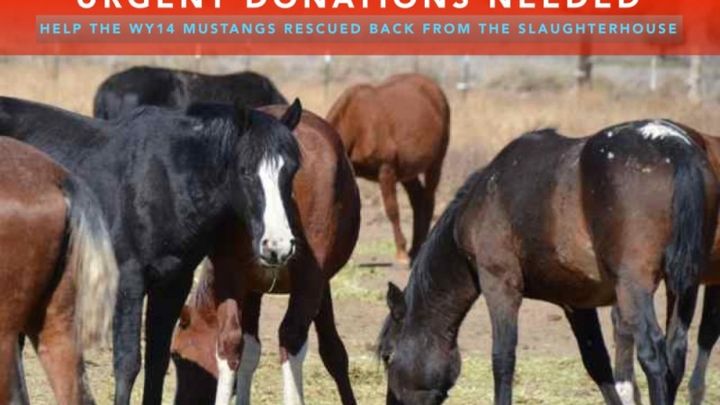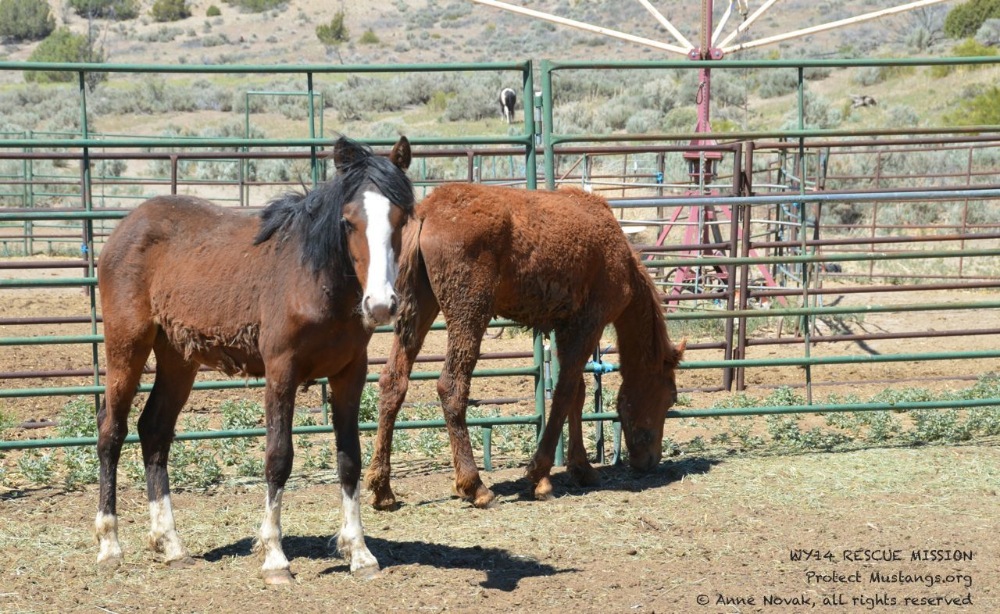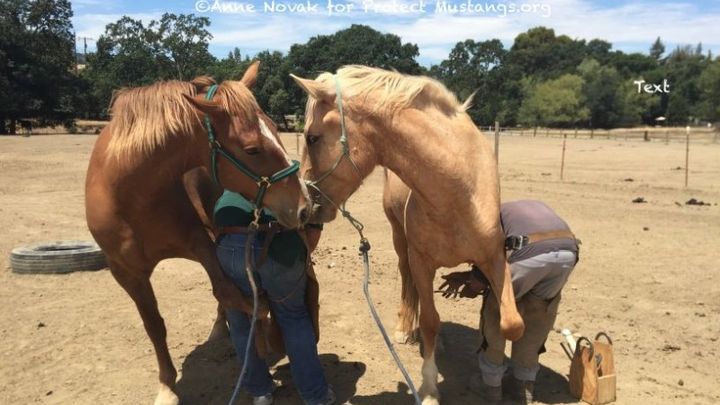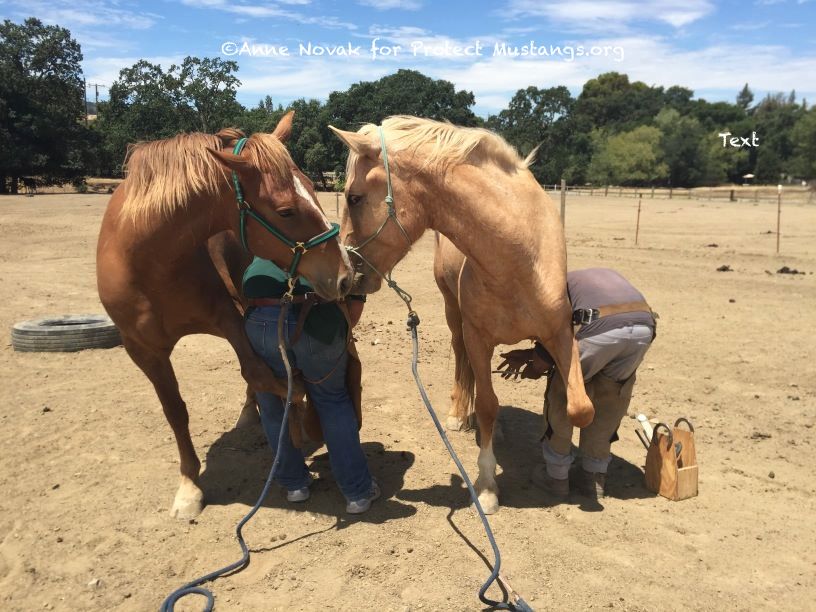
HELP: Move & Feed the WY14 Mustangs

URGENT: Help Move & Feed the WY14, Rescued from the Slaughterhouse
Their parents were all slaughtered after the roundup...
Now the WY14's new destination has fallen through!
We rescued these 14 wild youngsters back from the slaughterhouse after the brutal BLM roundup in 2014. Horseback Magazine reported on National treasures saved from the slaughterhouse http://horsebackmagazine.com/hb/archives/28702
Today they are 2-3 years old plus 2 miracle foals who were born despite the papas being slaughtered. The small herd has finished wintering at the layover and they need to be moved but their new location just fell through! The WY14 urgently need your tax-deductible donations for hauling, paddock rental, vet and hay.
Please make a donation today and share this information to help get the word out!
We urgently need some pasture/paddock space in Calfornia to house these young wild horses. All their parents and everyone over the age of 2 was slaughtered in Canada for human consumption. This is a temporary situation until Protect Mustangs can secure land for the sanctuary to keep them together after all they have suffered.
Protect Mustangs also needs a donated truck and stock trailer, fence panels, water troughs, halters & lead ropes to care for them as needed at the new location. Please contact us via [email redacted] if you have a truck, trailer or equipment to donate.
Protect Mustangs is an all volunteer 501c3 sponsored organization. Our sponsor is the Andean Tapir Fund noted on this Go Fund Me. All donations are tax deductible.
The WY14 thank you so much for helping them stay together after all they have suffered at the hands of people rounding them up and slaughtering their herd.
In gratitude,
Anne
Anne Novak
Volunteer Executive Director
www.ProtectMustangs.org
415-531-8454
- D
- A
- A


 Val & Sol are band brothers from Twin Peaks, California
Val & Sol are band brothers from Twin Peaks, California